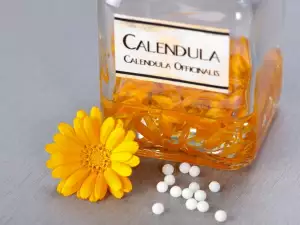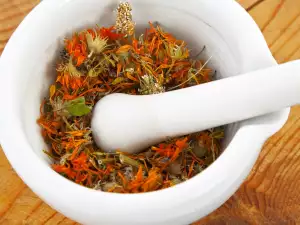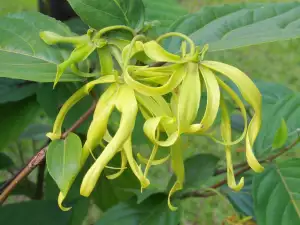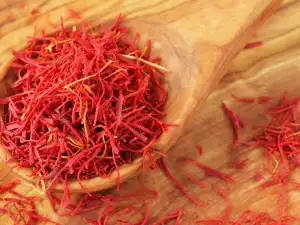Calendula / Marigold / is a genus of plants of the Asteraceae family, which includes about 20 species. It is widespread in the Mediterranean and Central Europe. Calendula was known as an excellent remedy back in ancient Greece, and today is one of the most used herbs with diverse applications in cosmetics and medicine.
Its qualities were worshipped by the ancient Egyptians, Germans, Indians, Persians and Americans. The last time marigold was widely used was during the Civil War for the treatment of open wounds. The name Calendula literally translates into "does not wilt."
To turn this beautiful flower into a healing herb, however, it must go through a special process. Calendula is a composite, herbaceous annual plant that has a poorly developed root. It reaches heights of up to 20″ (50 cm) and blooms from June to August.
Composition of marigold
All parts of the plant contain 0.02% essential oils, 4% mucoid substances, around 3% carotenoids, enzymes, alkaloids and phytoncides. The flowers of marigold contain the carotenoids lycopene, carotene, rubicsantin, citroxantin, flavohrom, flavoxanthin and others.

The stems of marigold contain tannins, the triterpenes faradiol and arnidiol, triterpene saponins, vitamin C and others. In the roots of marigold, there are inulin and triterpene saponins.
Collection and storage of marigold
Marigold grows in scrubs and deciduous forests. The flowers of marigold are primarily used for therapeutic purposes. Collection of the flowers should start when they are fully bloomed.
The ideal time for harvesting is in the morning before it gets hot, but after the dew has dried. The flowers must be fresh and upbeat. The collected flowers are dried at room temperature.
Before storing, the flowers must be completely dry, otherwise they will get moldy. This means that the flowers should be dry and brittle.
Benefits of calendula
Calendula has excellent antimicrobial, blood cleansing and antiallergic actions. The essential oil has a complex flavor that blends well in fat and alcohol, which explains its widespread use in creams and tinctures.
It functions as an antispasmodic, reducing spasms in the smooth muscles of internal organs and blood vessels. This effect is due to the flavonoids contained, which among other things, help the body cope with various allergens and carcinogens. This explains the widespread use of the herb in substances that fight allergies, cancer and viruses.

The bitter substances found in marigold stimulate the secretion of the glands of the gastrointestinal tract, which improves digestion and stimulates appetite. Calendula strengthens the immune system. The phytoncides in marigold have antimicrobial effects, while the saponins lower blood pressure, and help reduce swelling.
Calendula soothes the nervous system, improves the function of the heart muscle by slowing heart rate. Taken internally, it can strengthen the lining of the stomach and intestines and even battle ulcers.
The bactericidal properties of marigold act favorably against staphylococci, streptococci and other pathogens. Carotene in marigold stops the oxidation of cells and is involved in the renewal of the mucous membranes and skin. The flowers of marigold have a relaxing effect on the central nervous system, prescribed for heart problems with rhythm disorders.
When swallowed, it improves liver function, helps with liver disease, inflammation of the large intestine. Calendula may be used for hypertension and women entering menopause. Helps with diseases of the oral cavity and pharynx.
Traditional medicine with calendula
In folk medicine, calendula is also used for lupus, inflammation of the lymph nodes, menstrual problems, headaches, jaundice, spleen diseases.

The aerial parts of the plant are used - flowers, stems and leaves. In genital fungal diseases, apply washes and baths with marigold.
Infusion of marigold: 1 cup (250 ml) of boiling water is poured over 1 tablespoon of calendula, brewed for 5 minutes and strained. The infusion is drunk while hot, never sweetened. Douches require brewing 2 tablespoons with 2 cups (500 mL) of water.
Cosmetics with calendula
The soothing, rejuvenating and regenerating properties of marigold make it an ideal ingredient for various cosmetic products for skin care. Calendula oil is suitable for dry skin.
It is specially suitable for the summer, because it protects against further drying, keeping your skin fit and beautiful.
The use of products with calendula reduces the risk of skin irritation. Calendula is also used as an ingredient in products for removing makeup.
Ointments of calendula are extremely useful for varicose veins, burn wounds or post-surgical wounds. They work great against fungus of the feet.



















Comments